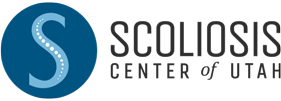Blogs
Understanding the Connection Between Scoliosis and Sciatica

Scoliosis is a condition characterized by an abnormal curvature of the spine. This curvature can lead to a range of health issues, including back pain, reduced mobility, and nerve damage. The sciatic nerve, which extends from the lower back to the legs, is particularly vulnerable to the effects of scoliosis. In this blog post, we’ll explore the relationship between scoliosis and sciatica, and offer some tips for managing related symptoms.
How does scoliosis affect the sciatic nerve?
The sciatic nerve is the largest nerve in the body and is responsible for transmitting signals from the lower back and legs to the brain. When scoliosis occurs, the abnormal curvature of the spine can put pressure on the sciatic nerve, leading to pain, tingling, and numbness in the legs. These symptoms can range from mild to severe and can greatly impact a person’s quality of life.
It’s important to note that scoliosis can contribute to the development of sciatic nerve pain, so if you suffer from sciatic nerve pain, there’s a chance that you’ve been living with scoliosis. When the spine is in an S or C shaped curve, as it is in the case of scoliosis, it can cause inflammation to the nerves that run through it, including the sciatic nerve. This inflammation can cause the sciatic nerve to behave erratically, which can result in pain, tingling, or numbness in the buttocks and legs. People with scoliosis are more likely to develop sciatica because of the pressure on their spine.
Can physical therapy help with sciatica and scoliosis?
For individuals with scoliosis and sciatica, physical therapy can offer a range of benefits. In particular, physical therapy can help alleviate pain, reduce inflammation, and strengthen the muscles in the back and legs. This can help reduce pressure on the sciatic nerve and improve overall mobility. Physical therapy can also help individuals develop coping mechanisms for managing pain and reducing the risk of further damage.
At The Scoliosis Center of Utah, Dr. Katalina Dean may recommend seeking physical therapy, or recommend specific exercises that may be useful for improving overall wellness and decreasing scoliosis symptoms.
What are non-surgical options for sciatica and scoliosis?
In addition to physical therapy, there are several non-surgical treatment options that can help manage sciatica and scoliosis. At The Scoliosis Center of Utah, we utilize Chiropractic BioPhysics® and the ScoliBrace® system. Each of these treatments can be effective in reducing pain and promoting healing, and they are both non-surgical treatments.
Chiropractic BioPhysics® has been shown to move bones and joints effectively, including in cases of scoliosis where surgical options were previously considered to be the only available option. Additionally, the ScoliBrace® functions unlike traditional medical braces, and instead of simply stopping the progression of the curve, it can actually reverse the curve through its unique, customized, overcorrection approach.
Exercises to Alleviate Sciatic Nerve Pain
There are several exercises you can do to alleviate sciatic nerve pain if you have scoliosis. These exercises are designed to help strengthen your core muscles and improve your posture, which can help alleviate pressure on the sciatic nerve. Some exercises that may be helpful include the pelvic tilt, superman, and leg lifts.
At The Scoliosis Center of Utah, Dr. Katalina Dean may provide specific, customized exercises for each unique patient based on their needs and anatomy. Every scoliotic curve is different, which is why we utilize customization for all of our treatment modalities. At the Scoliosis Center of Utah, we also use the ScoliBalance system.
Is it possible to prevent sciatic nerve pain when you have scoliosis?
Preventing sciatic nerve pain when you have scoliosis involves maintaining good posture, avoiding heavy lifting, and keeping your weight within a healthy range. Regular exercise and stretching can also help to alleviate the symptoms of scoliosis and sciatic nerve pain. If you have scoliosis, the more effective and regular your treatment is, the more easily your body will adapt to daily life and whatever tasks, occupations, physical activities, or hobbies you enjoy.
Coping Strategies for Managing Sciatica and Scoliosis
Finally, there are several coping strategies that can help individuals manage symptoms related to sciatica and scoliosis. These include maintaining good posture, using ice or heat to alleviate pain, practicing gentle stretching exercises, and taking breaks throughout the day to rest and stretch muscles. By taking a proactive approach to managing their condition, individuals with sciatica and scoliosis can lead full and healthy lives.
Treatment Options
If you are experiencing sciatic nerve pain and have scoliosis, there are treatment options available to you. Treatment will depend on the severity of your scoliosis and the extent of your sciatic nerve pain. At the Scoliosis Center of Utah, Dr. Katalina Dean may recommend physical therapy to strengthen the muscles around your spine and improve your posture. You may also be a candidate for the ScoliBrace® system, Chiropractic BioPhysics®, and ScoliBalance. With a wide array of powerful, effective, and non-invasive treatments available at The Scoliosis Center of Utah, we may have exactly the options you need to holistically reduce your scoliosis symptoms and improve your quality of life.
Scoliosis Treatment in Midvale, Utah
As we’ve explored, scoliosis and sciatic nerve pain are two conditions that can impact your quality of life. Understanding the link between these two conditions is essential to managing their symptoms effectively. If you have scoliosis and are experiencing sciatic nerve pain, contact your healthcare provider to discuss your options for treatment. By staying proactive about your health and taking steps to alleviate your symptoms, you can improve your quality of life and prevent further complications from these conditions.
Although scoliosis and sciatica together can be a challenging combination, with the right treatment and management strategies, it is possible to reduce or eliminate pain and improve mobility. By visiting us at The Scoliosis Center of Utah, Dr. Katalina Dean can guide you through exploring a wide range of treatment options so that you can find the solution that works best for their unique needs. If you or a loved one is experiencing sciatica or scoliosis, don’t hesitate to seek help from a qualified healthcare professional. With the right care and support, you can overcome these challenges and live life to the fullest.
Do You Qualify for Care?
Schedule an Appointment Below
